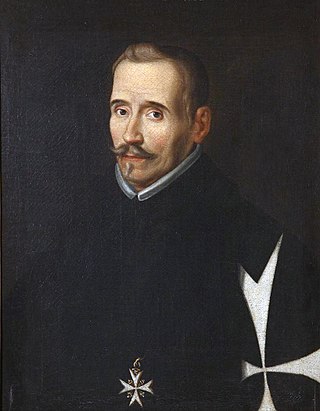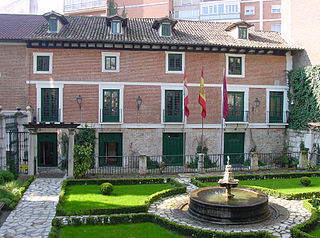
Félix Lope de Vega y Carpio was a Spanish playwright, poet, and novelist who was a key figure in the Spanish Golden Age (1492–1659) of Baroque literature. In the literature of Spain, Lope de Vega is second to Miguel de Cervantes. Cervantes said that Lope de Vega was “The Phoenix of Wits” and “Monster of Nature”.

The Spanish Golden Age was a period that coincided with the political rise of the Spanish Empire under the Catholic Monarchs of Spain and the Spanish Habsburgs. This era saw a flourishing of literature and the arts in Spain. The most significant patron of Spanish art and culture during this time was King Philip II (1556–1598). However, the period is more broadly associated with the reigns of Isabella I, Ferdinand II, Charles V, Philip II, Philip III, and Philip IV, when Spain was at the peak of its power and influence in Europe and the world.

The Paseo del Prado is one of the main boulevards in Madrid, Spain. It runs north–south between the Plaza de Cibeles and the Plaza del Emperador Carlos V, with the Plaza de Cánovas del Castillo lying approximately in the middle. The Paseo del Prado forms the southern end of the city's central axis. It enjoys the status of Bien de Interés Cultural (BIC), and as part of a combined UNESCO World Heritage Site with Buen Retiro Park.

Juan van der Hamen y (Gómez de) León was a Spanish painter, a master of still life paintings, also called bodegones. Prolific and versatile, he painted allegories, landscapes, and large-scale works for churches and convents. Today he is remembered mostly for his still lifes, a genre he popularized in 1620s Madrid.

The Cerralbo Museum is an art museum in Madrid, Spain. It houses the art and historical object collections of Enrique de Aguilera y Gamboa, Marquis of Cerralbo, who died in 1922. It is one of the National Museums of Spain and it is attached to the Ministry of Culture.

The Museum of Romanticism is an art museum in Madrid, Spain, devoted to Romanticism. It was inaugurated in 1924 as Museo Romántico. It is one of the National Museums of Spain and it is attached to the Ministry of Culture.

The Royal Mint of Spain is the national mint of Spain. The FNMT-RCM is a public corporation that is attached to the Ministry of Economy.
Juan Millé Giménez (1884–1945) was a Spanish writer. He was a professor of literature at the University of La Plata as well as the Buenos Aires School of Commerce. He was born in 1884 in Almería, Spain.

La Casa de la Ciencia in the city of Seville, Spain is a centre for popularizing science.
The following is a timeline of the history of the city of Madrid, Spain.
The Steel of Madrid is a 1608 play by the Spanish writer Lope de Vega, considered part of the Spanish Golden Age of literature.

The Cervantes' House is a museum in Valladolid, Spain, devoted to Miguel de Cervantes. The museum is located in the house that was Cervantes's home. It is one of the National Museums of Spain and it is attached to the Ministry of Culture.

The Palacio de Xifré is a Madrilenian palace now disappeared that was in the Paseo del Prado, at the corner Calle de Lope de Vega, opposite the Prado Museum. It was one of the best examples of Neo-Mudéjar architecture in Madrid and one of the palaces that the Spanish financial elite of the second half of the 19th century had built along the paseos del Prado, Recoletos and la Castellana.

The Museum of the Royal Mint is a permanent exhibition in the Spanish Royal Mint in Madrid, Spain. It contains the largest numismatic collection in Spain and one of the most complete in Europe.

The National Museum of Science and Technology is a technology museum in Spain devoted to technology promotion and preservation. It owns a collection of more than 19,000 scientific instruments, technological devices, vehicles, machines and industrial tools from the 16th century until nowadays. Dependent on the Ministry of Science, it is one of the National Museums of Spain, and it is managed by the Spanish Foundation for Science and Technology (FECYT).

The Casa Portela Museum is a historic house and local history museum located in Vega Baja Pueblo, the administrative and historic center of the municipality of Vega Baja, Puerto Rico. The museum consists of a historic home locally known as the Portela House and an adjacent modern museum building located in a revitalized historic city block bordered by Hostos Street to the east, and the José Julián Acosta and Betances Streets to the north and south, respectively.
The Medrano Academy also known as the Poetic Academy of Madrid, was a famous academia literaria of the Spanish Golden Age founded by Dr. Sebastián Francisco de Medrano. Established between 1616 and 1622 on Leganitos Street in Madrid, the Medrano Academy was composed of some of the greatest poets and writers of the Baroque period: Lope de Vega, Quevedo, Góngora, Tirso, Pedro Calderón de la Barca, Luis Vélez de Guevara, Alonso de Castillo Solórzano, and many others.














